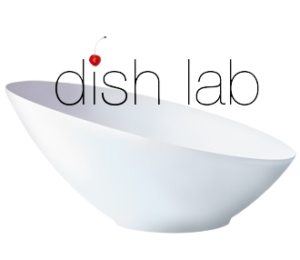Stress and Obesity Short Course – UNIFESP, São Paulo, Brazil
Dr. T will be teaching a short course on Stress and Obesity at the Universidade Federal de São Paulo in May. Click the title above to see the syllabus and download the readings.
Stress & Obesity
Syllabus
UNIFESP, São Paulo, Brazil
22-23 May 2012
Part 1: Stress
PDF to read
- Cohen, S., Janicki-Deverts, D., & Miller, G.E. (2007). Psychological stress and disease. Journal of the American Medical Association, 298, 185-1687.
- Taylor, S.E. (2006). Tend and befriend: Biobehavioral bases of affiliation under stress. Current Directions in Psychological Science, 15, 273-277.
Recommended
- Blascovich, J., Mendes, W. B. (2000). Challenge and threat appraisals: The role of affective cues. In Feeling and Thinking: The Role of Affect in Social Cognition, J. Forgas (ed). Cambridge University Press: Paris, 59-82.
- Engel, G. L. (1977). The need for a new biomedical model: A challenge for biomedicine. Science, 196, 129-136.
- Lazarus, R S and Folkman, S, (1984). Stress, Appraisal, and Coping. New York: Springer.
Part 2: Stress and Eating
PDF to read
- Dallman, M.F. (2010). Stress-induced obesity and the emotional nervous system. Trends in Endocrinology & Metabolism, 21, 159-65
- Tomiyama, A. J., Mann, T., Vinas, D., Hunger, J. M., DeJager, J., & Taylor, S. E. (2010). Low calorie dieting increases cortisol. Psychosomatic Medicine, 72, 357-364.
Recommended
- Block, J.P., He, Y., Zaslavsky, A.M., Ding, L., Ayanian, J.Z. (2009). Psychosocial stress and change in weight among US adults. American Journal of Epidemiology, 170, 181-192.
- Epel, E., Lapidus, R., McEwen, B., Brownell, K. (2001). Stress may add bite to appetite in women: a laboratory study of stress-induced cortisol and eating behavior. Psychoneuroendocrinology, 26, 37-49.
- Tomiyama, A. J., Dallman, M.F., & Epel, E. S. (2011). Comfort food is comforting to those most stressed: Evidence of the chronic stress response network in high stress women. Psychoneuroendocrinology, 36, 1513-1519.
Part 3: Obesity
PDF to read
- King, N.A., Hopkins, M., Caudwell, P., Stubbs, R.J., Blundell, J.E. (2009). Beneficial effects of exercise: shifting the focus from body weight to other markers of health. British Journal of Sports Medicine, 12, 924-927.
- In particular, Figure 2 Myers, M.G. Jr., Leibel, R.L., Seeley, R.J., Schwartz, M.W. (2010) Obesity and leptin resistance: Distinguishing cause from effect. Trends in Endocrinology & Metabolism, 11, 643-51.
- Skim Patterson, M., Bloom, S.R., Gardiner, J.V. (2011) Ghrelin and appetite control in humans: Potential application in the treatment of obesity. Peptides, 32, 2290-2294.
Recommended
- Beccuti, G., Pannain, S. (2011) Sleep and obesity. Current Opinion In Clinical Nutrition & Metabolic Care, 14, 402-412.
- Mietus-Snyder, M. L. & Lustig, R. L. (2008). Childhood obesity: Adrift in the “Limbic Triangle.” Annual Review of Medicine, 59, 147-162.
Part 4: Measurement
PDF to read
- Karlén, J., Ludvigsson, J., Frostell, A., Theodorsson, E., Faresjö, T. (2011) Cortisol in hair measured in young adults – a biomarker of major life stressors? BMC Clinical Pathology, 25, 12.
- Standard Operating Protocol for hair collection (from University of Dresden, Kirschbaum Lab)
- Perceived Stress Scale (Cohen, Kamarck, & Mermelstein, 1983)
- Social Readjustment and Ratings Survey (Holmes & Rahe, 1967)
- Positive and Negative Affect Schedule (Watson et al., 1988)
- Salivary cortisol measurement – Read http://www.macses.ucsf.edu/research/allostatic/salivarycort.php
